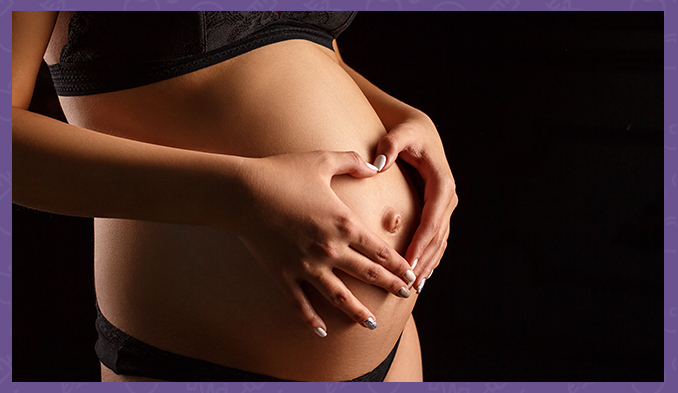What is a placenta, how does it work for you and your baby?
We seem to know all these questions without having studied or read about it, but do we know enough?
Let's clarify a few important things so that going into the details we can be a little more informed.
The placenta is a newly forming organ in a woman's uterus during pregnancy. It supplies blood to the fetus separately from your own circulation, as well as providing a link between the two organisms - mother and child. The connection allows the placenta to perform functions that your unborn baby cannot perform for itself. The umbilical cord is the one that connects your baby to its "house" - the placenta.
Oxygen and nutrients pass from your blood supply into the placenta. From there, the umbilical cord carries the oxygen and nutrients to the baby. Waste substances from the fetus, such as carbon dioxide, pass back through the umbilical cord to the placenta and then into your bloodstream for your body to dispose of.
The placenta produces hormones that help your child grow and develop. It also gives some protection against infections during intrauterine fetal development, and protects against most bacteria.
Towards the end of pregnancy, the placenta passes antibodies from you to your baby, giving them immunity for about 3 months after birth. However, it only passes on antibodies that your body has already made !
Placenta previa - what is it?
Normal placental abduction is towards the upper, lateral, anterior or posterior part of the uterus. In rare cases, it may attach to the lower part of the uterus. When this happens, it is called - low lying, covering the entrance to the uterus, or so-called - previa.
During pregnancy, the placenta moves as the uterus stretches and grows. As the pregnancy continues and the uterus stretches, the placenta usually moves toward the top of the uterus. By the third trimester, the placenta should be near the tip of the uterus. This position allows the cervix or the entrance to the womb at the bottom of the uterus to have a clear path for birth.
In following the course of pregnancy, cases have been found in which the placenta previa resolves over time. This is due to an increase in the size of the uterus, respectively - the distance of the placenta from the entrance to the uterus.
Risk factors:
- Bright red vaginal bleeding without pain in the second half of pregnancy is the main sign of placenta previa. Some women also have accompanying contractions;
- Have scarring on any of the uterine walls from previous surgery, including cesarean delivery, removal of uterine fibroids, dilation, and curettage;
- You had the same case with a previous pregnancy;
- You are carrying more than one fetus or are observed, so-called - multiple pregnancy;
- You are 35 or older;
- Non-white women suffer at times more;
- You smoke or use drugs;
Diagnosis:
- Transvaginal ultrasound - The doctor inserts a probe into the vagina to provide an internal view of the vaginal canal and cervix. This is the preferred and most accurate method of determining placenta placenta previa.
- Transabdominal ultrasound - A gel is placed on the abdomen, a transducer is slid with the aid of the medical gel over the skin of the abdomen to inspect the pelvic viscera and map the placenta. The sound waves give a picture on a television screen, which shows whether there are any such suspicions.
- MRI - Magnetic Resonance Imaging - This scan will help to clearly determine the location of the placenta.
Prevention:
Pregnancy tracking is a protective factor for you and your baby if you have placenta previa!
If you have a placenta previa, your doctor will monitor you and your baby to reduce the risk of serious complications, vaginal bleeding before or during labour, and in the first few hours after birth.
If premature delivery is necessary and heavy bleeding occurs, a caesarean section may be performed to preserve the health of both the baby and the mother.
For more information, we at Medical Karaj are at your service.
Call us on the following numbers "Medical Karaj": 0879 977 401 or 0879 977 402.
Also keep an eye on our constantly updated Facebook content.



